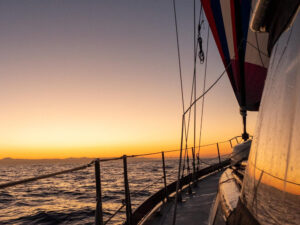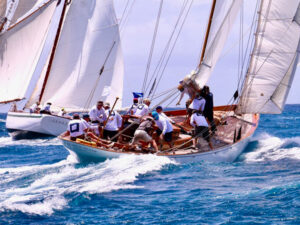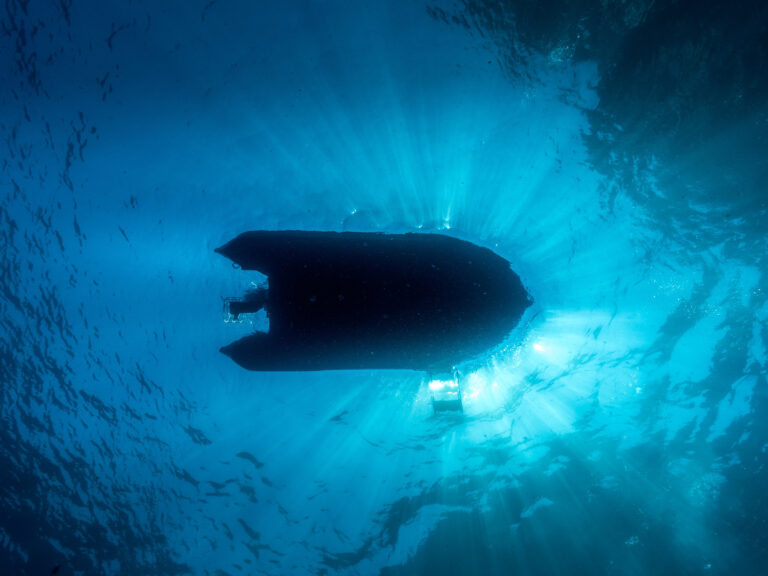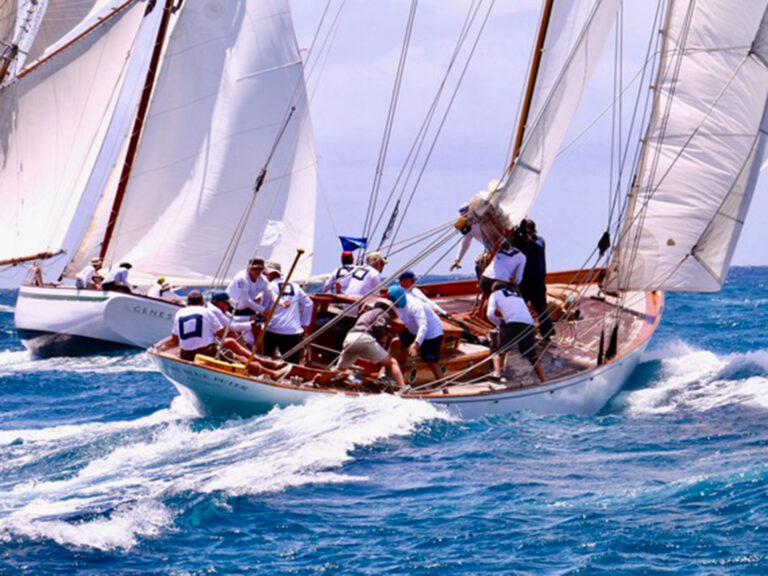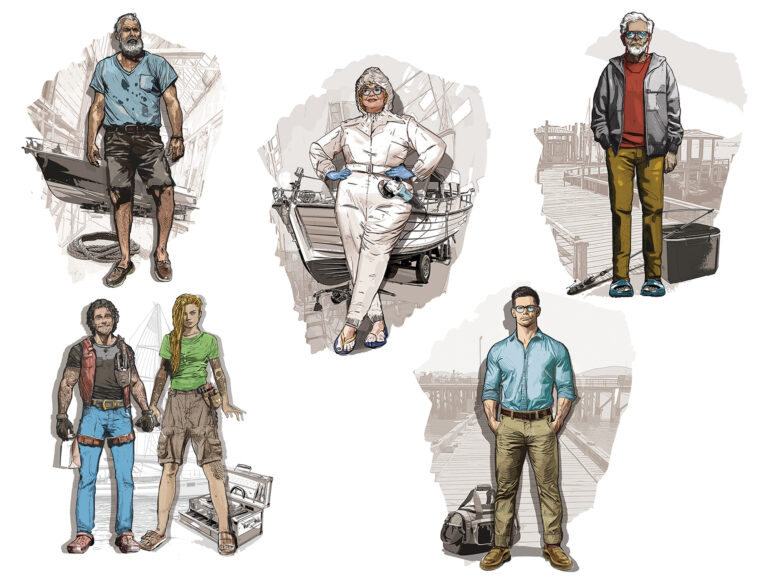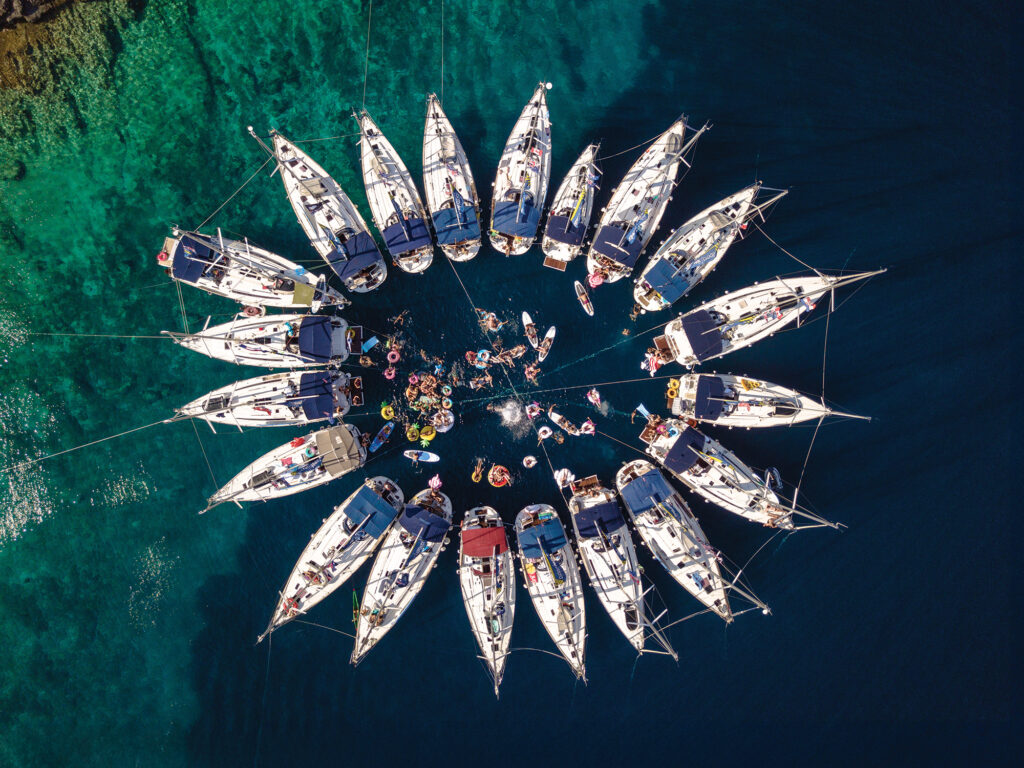
The cruising life thrives on a simple but powerful truth: Sharing knowledge strengthens the entire community. Out on the water, where self-reliance is key but no one succeeds alone, passing along hard-earned wisdom isn’t just helpful, but it’s also essential.
Whether it’s fixing an autopilot, plotting a tricky passage or simply pointing out the best local market, the acts of teaching and learning bind us together. It’s a cycle of giving and receiving that elevates the experience for everyone, turning a collection of independent sailors into something greater: a floating, ever-shifting village built on trust, generosity and shared adventure.
We learned this truth early on in our cruising journey. Anchored off Punta de Mita, Mexico, we watched our three young children splash in the surf, their laughter carrying on the breeze. Our 9-year-old son, Niall, scrambled up a rocky breakwall, eyes wide with excitement.
“I saw a seahorse!” he shouted.
Skeptical but amused, we nodded along—sure, kid, if you say so. But the next day, as we swam together, Niall transformed before my eyes.
“Look, there’s another one!” he declared, pointing beneath the surface.
And there it was, curled amid the rocks, just as he had said. In that moment, he became my teacher, and I, his eager student. His enthusiasm was contagious, shifting our roles and opening my eyes to the endless ways we learn from each other out here—young or old, novice or expert.
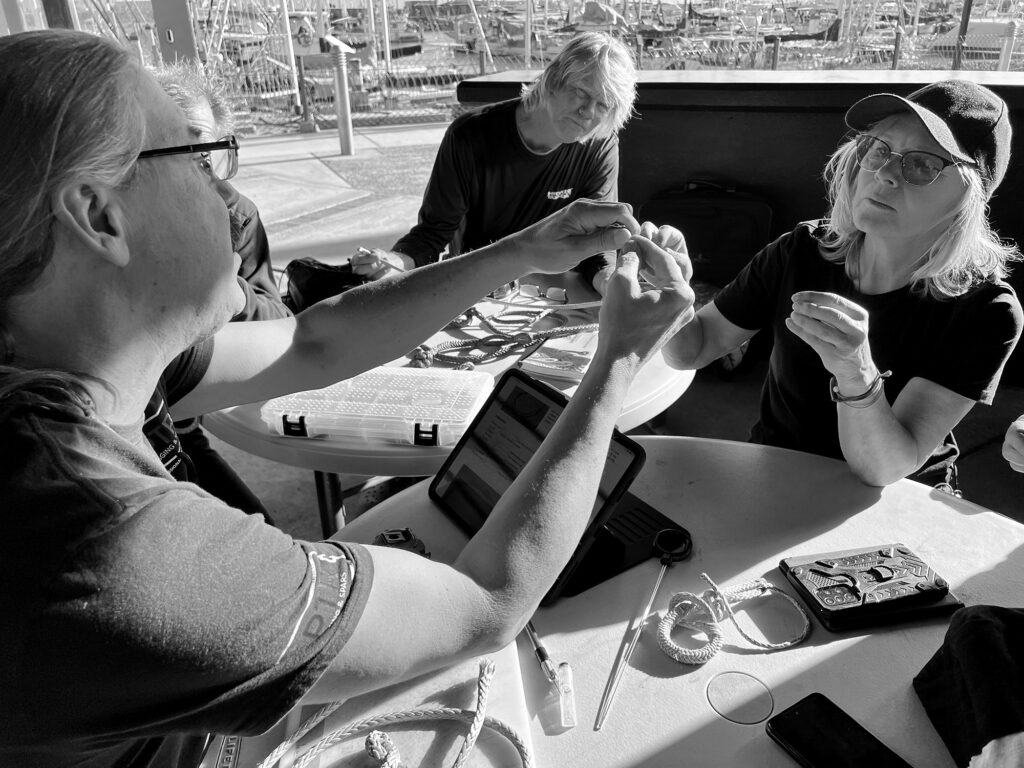
Compared with the relatively disconnected modern world, cruising facilitates connectedness. It lends itself to share from our particular skillset to benefit another, and to find fulfillment through a combination of continuous learning and giving from what we know.
RawsonVision
Tweens and teens kick back on a doughnut-shaped floatie in the turquoise-clear Bahamian water, tossing comments across the gap while one person gesticulates enthusiastically. Would you believe this is a school classroom?
High school physics teacher turned cruising dad Alex Rawson brought a tool from his alternative-education kit to share with more than a dozen boats in the Bahamas. Back in Vermont, colleagues dubbed his engaging method RawsonVision, and the Georgetown fleet was about to learn about it too. Boats with kids on board were invited to participate in analyzing themes in a film, then participate in Socratic dialogue about the questions those themes raised. Choosing Jurassic Park as the subject
ensured interest across a span of kids.
Movie viewing was set for a Friday night. Distributed across several vessels, groups of kids would watch the film alongside material prepared by Rawson that called out characters, their development, themes, key lines, foreshadowing and more.
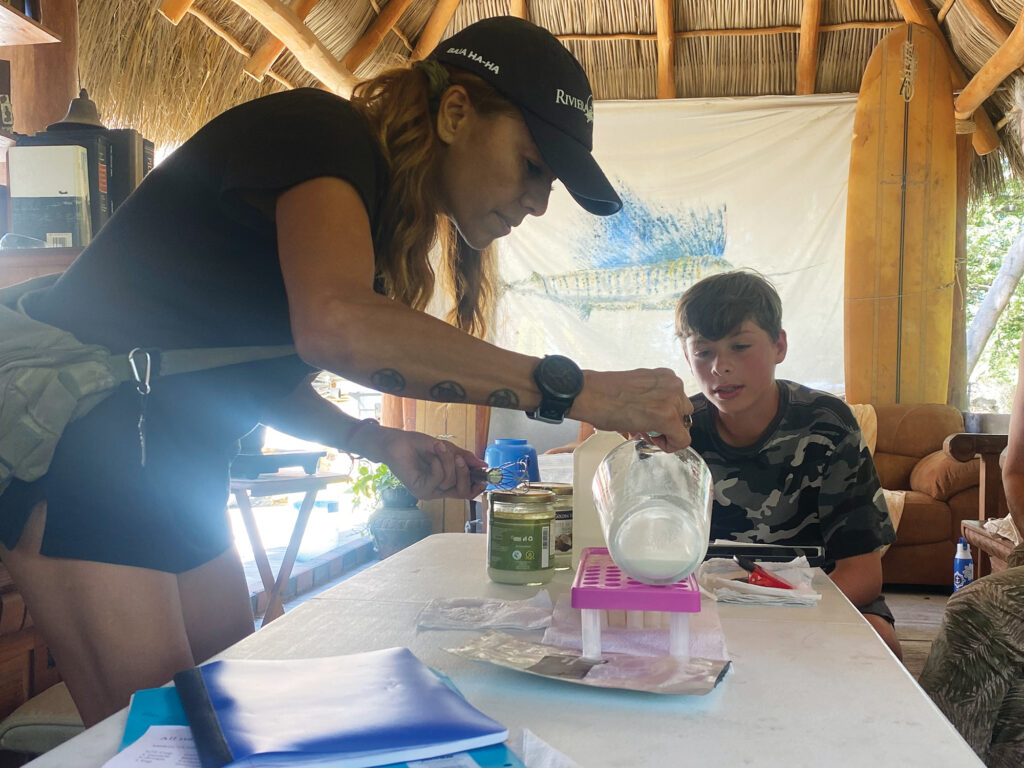
Thanks to synchronized start times across multiple host boats, any interested child could participate. The next day, lively conversations shifted from dispersed chats among boats at anchorage to in-person gatherings on floaties, where kids dangled their legs in the water as Alex facilitated.
“Mr. Rawson’s teaching passion on full display made me teary,” parent Amber Morse said. “What if school could be like this?” she posted in their Instagram
channel, Everyday Saturday. “I’d go! Would you?”
The goal of this setting, known in educational circles as a Harkness discussion, is to help students grow by learning from one another. It’s rooted in advancing knowledge through group discussion among peers, as opposed to receiving materials from an omniscient teacher. In this way, more than two dozen kids learned about Socratic debate while pondering questions raised from the film such as: Just because you could do something, should you?
Whether it’s fixing an autopilot, plotting a tricky passage or simply pointing out the best local market, the acts of teaching and learning bind us together, elevating the experience for everyone.
These boat kids are advancing their rhetoric skills, making priceless memories and, possibly best of all, keeping learning fun. Mirroring the greater good of
learning in the cruising community, where givers can benefit as much as recipients, the appreciation has prompted Alex to expand RawsonVision with further sessions for the kids in their radius.
A Sense of Purpose
The VHF radio speaker crackles on the morning net in La Cruz de Huanacaxtle, Mexico.
“Attention the fleet, attention the fleet! This is Marina Riviera Nayarit. Kat here reminding you that volunteers for beach cleanup will meet me in front of the deli at 9:30 a.m. tomorrow. The Kids Club trash boat regatta is this week. I’ll make a more detailed announcement on the kids’ net, on Channel 71, after this net concludes. Also coming up this week, we have cruisers leading seminars on Tuesday and Friday in the yacht-club lounge: Tuesday is a Panama Canal transit session from S/V Apsaras, and Friday M/V Noeta leads the Women Who Sail gathering about how to cruise and stay married. Wine for the women! Don’t forget, Wednesday is propane-refill day: Bring your tanks to Dock 9 before noon, pick up after 4 p.m.”
Echoing over VHF radios aboard boats scattered around Banderas Bay, Kat Liana makes announcements during the morning cruiser net. This West Coast cruiser arrived on her own boat more than 15 years ago, liked it so much that she stayed, and eventually became an integral part of the community. Her announcement indicates a few of the many hats Kat wears as a community organizer. Perhaps the most important, and entirely unofficial, role is helping cruisers find purpose.
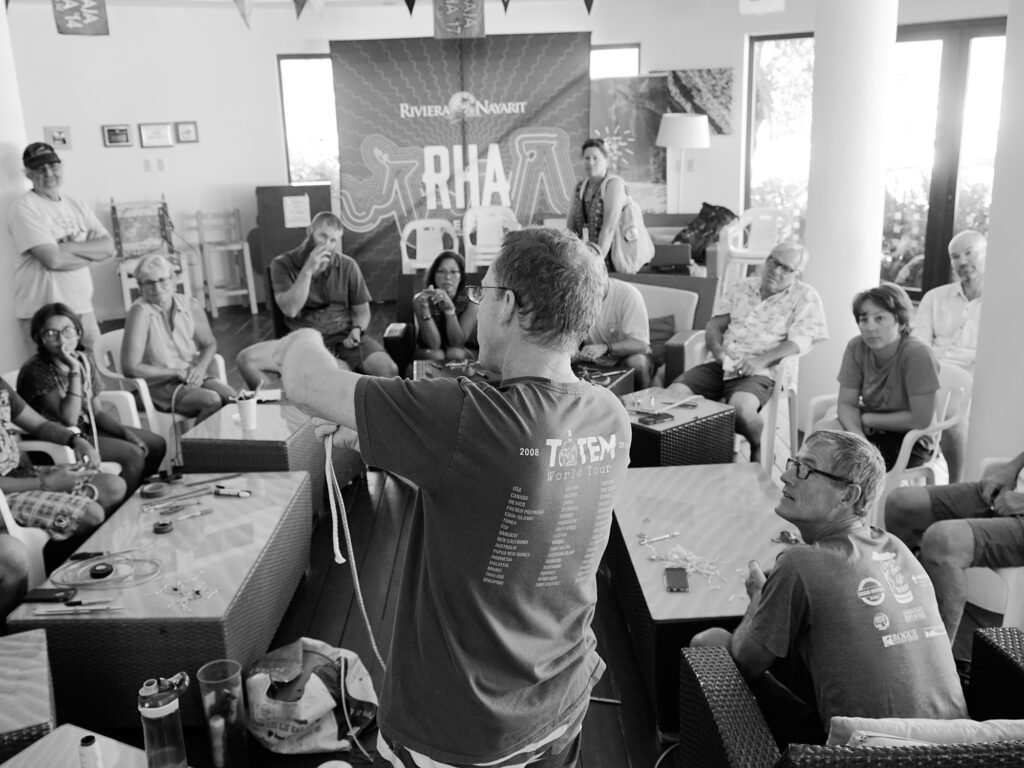
Banderas Bay is a cruising hub for sailors who have done the miles and surmounted the hurdles to cut the docklines and sail away. After exhaling with the relief of arrival, it’s easy to sag into complacency. This happens often enough: After dreaming of retirement to the tropics on a sailboat during the daily commute, the reality of one beautiful Groundhog Day after another is less appealing in reality than it was from afar. Mission accomplished? It can leave a vacuum where purpose used to reside.
Needing purpose is an often unanticipated challenge for early cruisers. Back in 2008, I was excited to quit my job and embark on an exciting life cruising with Jamie and our children. It was surprising to feel gaping holes as I sought fulfillment in everyday life. The rewards my job provided had evaporated, and I wasn’t getting high-fives for another awesome pancake breakfast from the kids. It took time to find new sources for fulfillment, new ways to find meaning away from a “normal” working career.
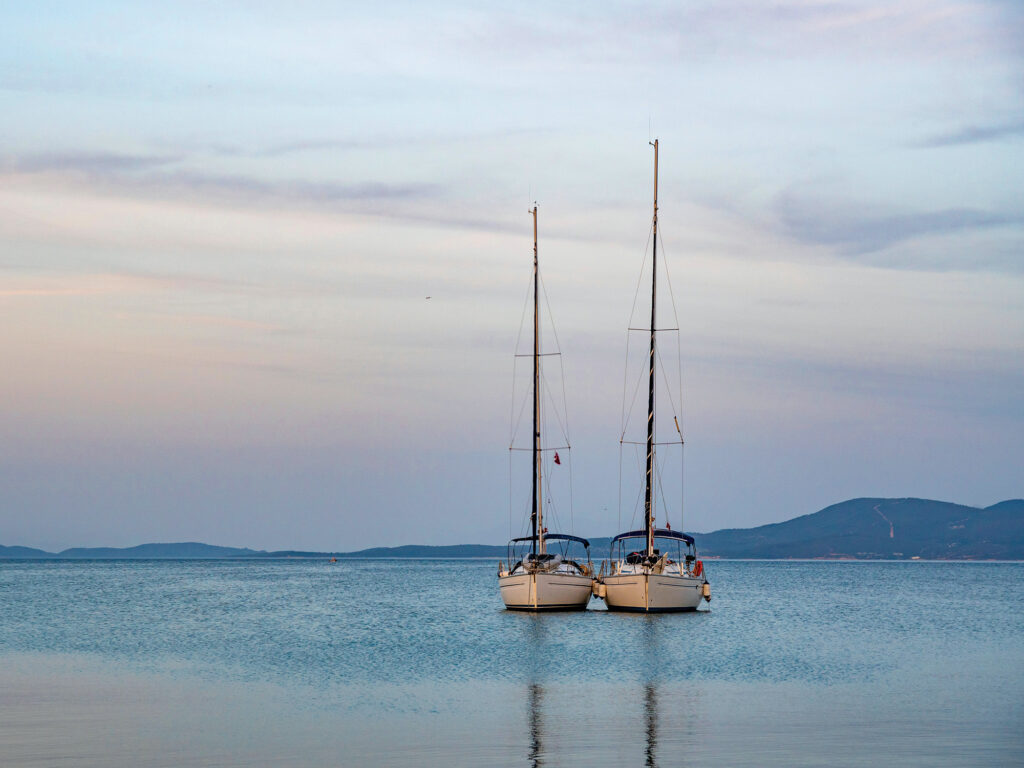
Kat’s a champion for cruisers and the community that’s become her home. She helps cruisers find purpose and cruising kids to bond through shared experiences. The free seminar series she sets up (two or three weekly during cruising season) are led by her recruits from the fleet. One boat brings medical skills. Another can give a celestial nav session. Saltier cruisers who have made the passage to the Pacific help the newer sailors prepare. Cruising kids do everything from beach-trash cleanup to taking over the service side of a local restaurant to helping at a nearby orphanage—all because Kat makes this happen.
“I want to volunteer along the way” is an aspiration we’ve heard from many hopeful cruisers. But there’s no app for that, and many cruisers are sometimes overwhelmed enough adjusting to their new life. In La Cruz, Kat can help them find their balance and purpose.
Splicing Lessons
There’s a warm late-afternoon glow over tables in front of the Cruiseport marina where Curtis Denmark is sharing knowledge. The focus of today’s gathering: splicing Dyneema and making soft shackles. Curtis has worked with Dyneema for years, and soft shackles are used extensively aboard his 48-foot Tayana, Manna, when they can replace traditional hardware.
After four years making a lap of the Pacific on Manna, Curtis and his wife, Julie, looped back to Alaska and down the North American coast. While paused in Ensenada, Mexico, for a refit to prepare for further adventures, they lent a hand to the newer cruisers on their first leg beyond the US border. There’s another golden hour lesson: modeling the cruising community’s unspoken code of mutual support.
Curtis and Julie were introduced to that code as part of the Coho Ho Ho. While this Puget Sound-based organization describes itself as a rally, it doesn’t have a shotgun start or staggered parties down the coast. Instead, the heart of the organization is in preparing crews who plan to sail from Puget Sound to California and beyond. They accomplish this through months of seminars and community meetups—in person and online—where experienced sailors guide and uplift hopeful newcomers. They emphasize individual preparedness with a strong underpinning of mutual support to help each crew reach their goal of sailing in warmer waters to the south.
It might seem like a small example, but it’s an important one. It’s setting the tone for the rest of their cruising lives—for newer cruisers who might not yet be introduced to the code, the value of paying it forward and being mindful for when it’s their turn.
Building Community
It’s 1996. We’re guests on a sailboat in the Sea of Cortez, hosted by cruisers and friends that Jamie made in Yugoslavia while backpacking a decade earlier. We have just spent an entire day clustered in a cockpit with their anchorage neighbor. The neighboring boat was a trawler, and the engine wasn’t working because a widget wasn’t working. They had the replacement part, except it didn’t fit. As a burning sun sank below saguaro-spiked sierras, the assembled brain trust of a half-dozen cruisers finally cobbled together a working widget. Icy Pacificos to toast victory never tasted so good.
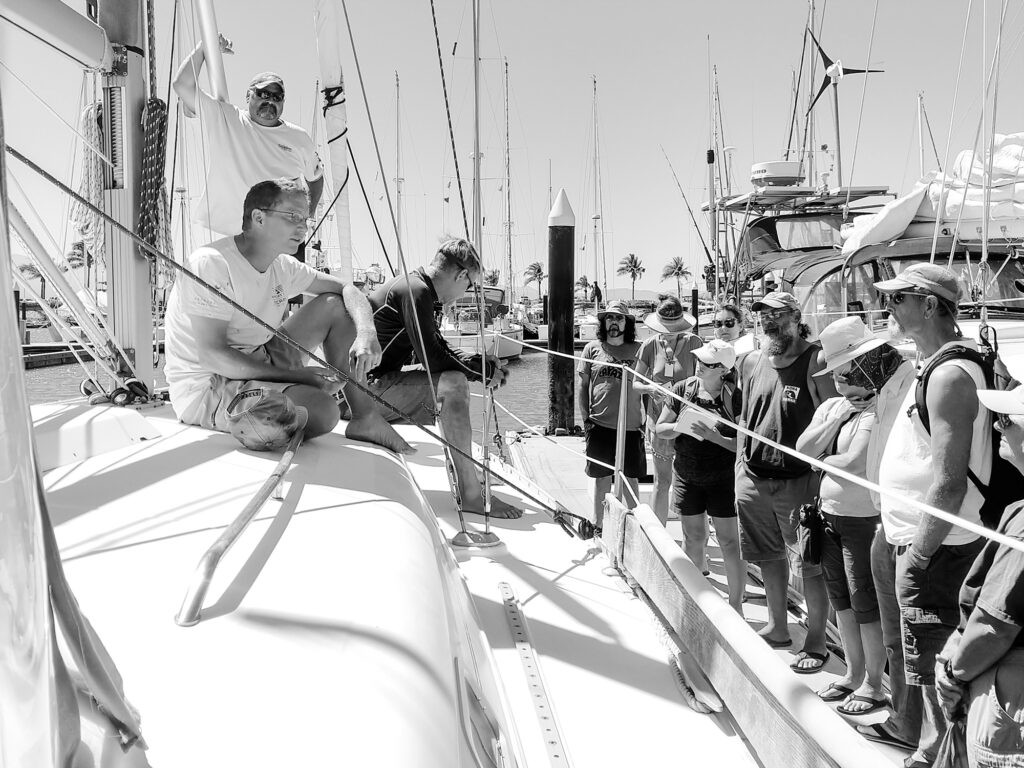
Jamie hadn’t sold me on cruising yet, but seeing the way a community came together for mutual support was a tipping point.
Exactly two decades later, in July 2016, Jamie and I began our coaching business to decode cruising and make it easier for others to enjoy. Building a service based on work we find deeply gratifying felt almost too good to be true, but it came with an ironic barrier. We feel that pay-it-forward cruising code keenly, yet now we were asking to be paid.
For years prior, we answered questions sent to us, often investing hours of our time and sometimes never hearing back. We still do. But charging a modest fee for it gave us a vehicle to focus that energy, give our best, and keep cruising.
Choosing to sail away might seem like disregarding the security of a good life. For many cruisers, the choice is rooted in the opposite: We’re running toward greater fulfillment.
As our business grew, so did the connections among people we worked with. At first, it was incidental: introducing crews who we knew were in similar locations to share notes and routing plans or planning a meetup at an Annapolis boat show. But as our business gained momentum, our community grew beyond us with a genuine culture of sharing knowledge.
Today, we actively foster this shared village of sailors following their cruising dreams. It happens in group sessions based on whatever the zeitgeist is, be it steering-system inspection or South Pacific routing. It happens in forums we have on WhatsApp, Noforeignland and Facebook. It also happens everywhere cruisers are. A more experienced couple currently in St. Augustine, Florida, has organized meetups for first-year cruisers as they pass through on their way to the Bahamas, providing orientation and camaraderie. They’ve even created a moniker and a demonym: the TRU Crew, derived from Totem Raft Up, our community forum, also known as TRUmans.
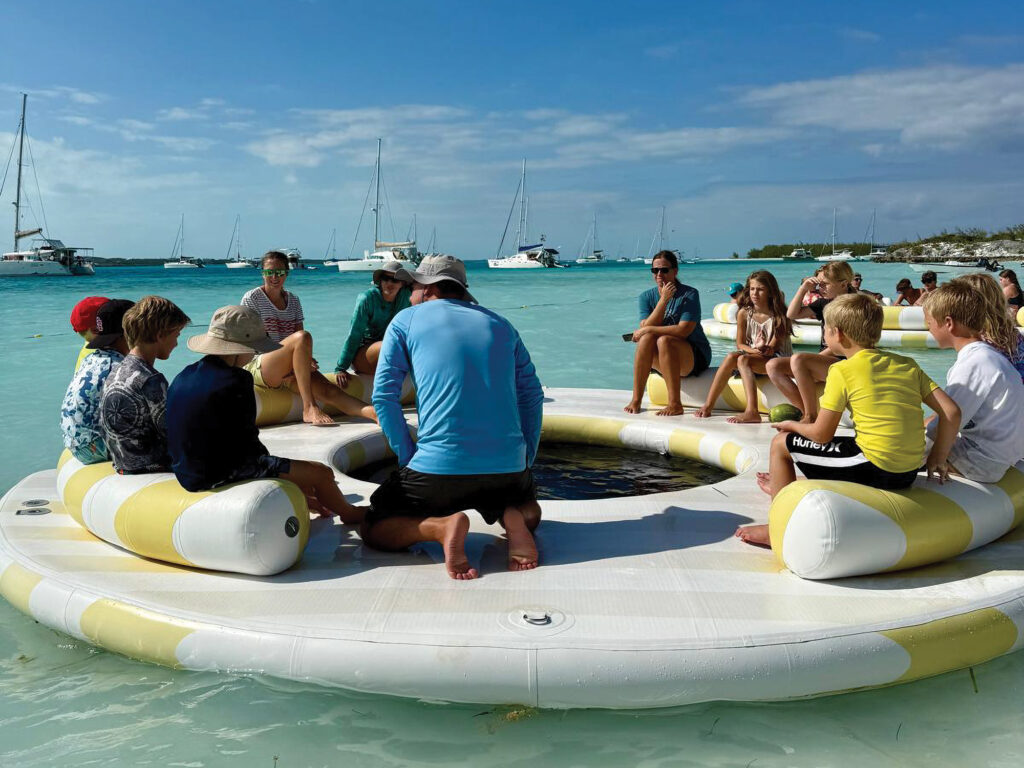
Few things make Jamie and me happier than seeing the successes of crews we’ve aided along the way, and I like to think we’ve helped extend the culture for providing mutual support in our coaching community, cementing this code before they have to feel the pointy end of that shared vulnerability. It can come fast and hard: Ask the boat struck by lightning and suddenly disabled but comforted by the immediate aid from a rush of support by boats around them.
Sharing what we know to help others has given us refreshed purpose too. It’s not a stretch to say that the community feels like family, as we celebrate their successes and support their harder days. Seeing how they—we, really—come together and take pride in being part of the community has filled our cups too.
Choosing to sail away might seem like disregarding the security of a good life. For many cruisers, the choice is rooted in the opposite: We’re running toward greater fulfillment than the mainstream delivered, actualized in ways that the lifestyle enables. It’s like our friend, delivery skipper John Herlig, says at his seminars for hopeful cruisers: “What you will see happen out there—and a lot of people are quite unprepared for this—is people with more knowledge than you offering to help you, not to show off what they know, and not to impress you, but simply because you are there and you need help. Which is, after all, the best reason.”

